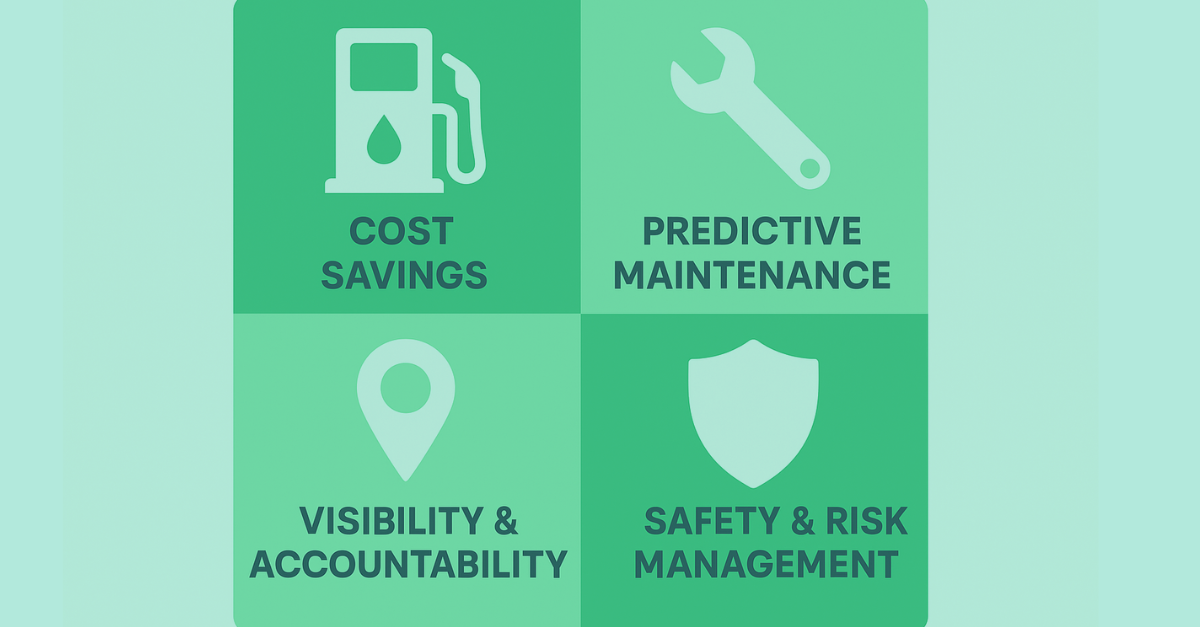Construction has always relied on heavy machines to get the job done, but today the industry is discovering a new source of power: data. Modern job sites are no longer measured only by the steel and concrete they produce. They are measured by efficiency, uptime, and the ability to deliver projects on schedule and within budget. At the heart of this transformation is telematics in construction.
Telematics is shifting from a tracking tool into a vital ecosystem that connects machines, operators, and managers in real time. This blog explores why telematics has become indispensable, the benefits it brings to contractors, the challenges that remain, and how it is shaping the future of construction.
What Telematics Means for Construction Today
Telematics in construction is the integration of telecommunications and informatics to monitor equipment, capture data, and provide actionable insights. In practical terms, it allows contractors to know far more than where a machine is located. It gives visibility into how machines are being used, how much fuel is consumed, when maintenance will be needed, and whether operators are following safe practices.
The concept is not new. Early versions were essentially GPS trackers that reported location. Over time, telematics has matured into a sophisticated platform that collects and analyzes data from sensors, onboard computers, and external networks. Major equipment manufacturers such as Caterpillar, Komatsu, Volvo, and John Deere were among the first to introduce telematics into their machines. Today, many heavy equipment models come with built-in telematics capabilities as standard features.
The role of telematics has expanded from a “nice to have” feature to an essential operational tool. Contractors who rely on spreadsheets, guesswork, or outdated maintenance logs are at a growing disadvantage compared to those who embrace connected equipment.
The Core Benefits of Telematics
Fuel Efficiency and Cost Control
Fuel is one of the largest controllable expenses on a construction site. With telematics, fleet managers can monitor idle times, inefficient routes, and operator behaviors that drive fuel waste. A clear picture of consumption makes it possible to set policies that reduce unnecessary idling, optimize scheduling, and enforce fuel-saving practices. Even small percentage gains in efficiency can lead to substantial cost savings across a fleet of machines.
Predictive Maintenance
Unexpected downtime is one of the most disruptive events in construction. When a machine fails in the middle of a project, schedules collapse and costs rise. Telematics enables predictive maintenance by sending alerts when a machine shows early signs of trouble. By tracking diagnostics, hours of operation, and component wear, managers can schedule service before breakdowns occur. This approach reduces repair costs, extends equipment life, and prevents the ripple effect of missed deadlines.
Visibility and Accountability
Telematics provides visibility that goes beyond location. It shows how assets are being used, whether utilization is optimal, and where inefficiencies occur. This accountability empowers managers to redeploy underused equipment, eliminate bottlenecks, and ensure that rented or owned machines are delivering full value. Transparent data also helps resolve disputes, verify project progress, and provide evidence for billing or compliance.
Safety and Risk Management
Safety is always a top priority, and telematics supports it in multiple ways. By monitoring operator behavior, such as speeding or improper handling, telematics can reinforce training and prevent accidents. Alerts can notify managers if equipment is being used outside of designated hours or locations, reducing theft and misuse. Insurers are increasingly recognizing the role of telematics in lowering risk, which can lead to better coverage terms or reduced premiums.

Overcoming the Adoption Gap
Despite the clear benefits, many contractors underutilize telematics in construction. Machines may arrive with telematics built in, but the systems remain dormant or are used only for location tracking. This underuse stems from several barriers.
First, telematics can appear complex. Contractors may believe they need specialized staff or costly software to make sense of the data. Second, cost perception remains a hurdle, even though the long-term savings far outweigh the investment. Third, some organizations lack the digital readiness to fully integrate telematics into their processes.
The solution is not simply installing hardware but fostering a cultural shift. Contractors must see telematics as an operational priority rather than a technical option. Training programs, clear ROI calculations, and step-by-step onboarding help bridge the gap between potential and practice.
Challenges to Watch
Connectivity Limitations
Many construction projects take place in remote areas where connectivity is unreliable. Without stable connections, data transfer can be delayed or interrupted. This limits the effectiveness of real-time monitoring and alerts. Advances in satellite connectivity and 5G networks are addressing this issue, but it remains a factor to consider.
Integration Complexity
Fleets often consist of machines from multiple manufacturers, each with its own telematics system. Integrating these systems into a unified platform can be challenging and expensive. Standardization efforts are improving, but contractors must still plan for interoperability when scaling telematics across diverse fleets.
Data Ownership and Security
As equipment becomes more connected, questions arise about who owns the data and how secure it is. Contractors want assurance that their data will not be misused or exposed. Manufacturers must prioritize transparent policies and invest in robust cybersecurity to build trust.
The Future of Telematics in Construction
5G and Real-Time Insight
Next-generation networks are unlocking faster and more reliable data transfer. This allows telematics systems to deliver insights with minimal delay, making real-time decision making possible even on remote job sites.
Artificial Intelligence and Automation
The combination of telematics data with AI is paving the way for automation. Machines will not only report conditions but also make adjustments automatically. For example, an autonomous earthmover could detect soil conditions and adapt operations without human intervention.
Integration with Digital Ecosystems
Telematics will not exist in isolation. It will integrate with other systems such as project management software, enterprise resource planning, and supply chain platforms. This creates a connected ecosystem where every decision is supported by data. Sustainability goals will also be advanced by reducing waste, improving fuel efficiency, and optimizing resource allocation.
Let HoloTrak Help!
Telematics in construction is no longer an optional feature. It is a foundational technology that drives efficiency, reduces downtime, enhances safety, and provides the visibility contractors need to remain competitive. While challenges such as connectivity, integration, and data security remain, the trajectory is clear. The future of construction will be built not only with machines but with the data those machines provide.
Contractors who embrace telematics are positioning themselves for stronger margins, safer projects, and more predictable outcomes. Those who wait risk being left behind in an industry where precision, accountability, and speed have become the new measures of success.
HoloTrak helps construction companies put telematics into action. If you are ready to see how smarter tracking and real-time insights can change the way your job sites operate, contact us today to learn more and get started.

